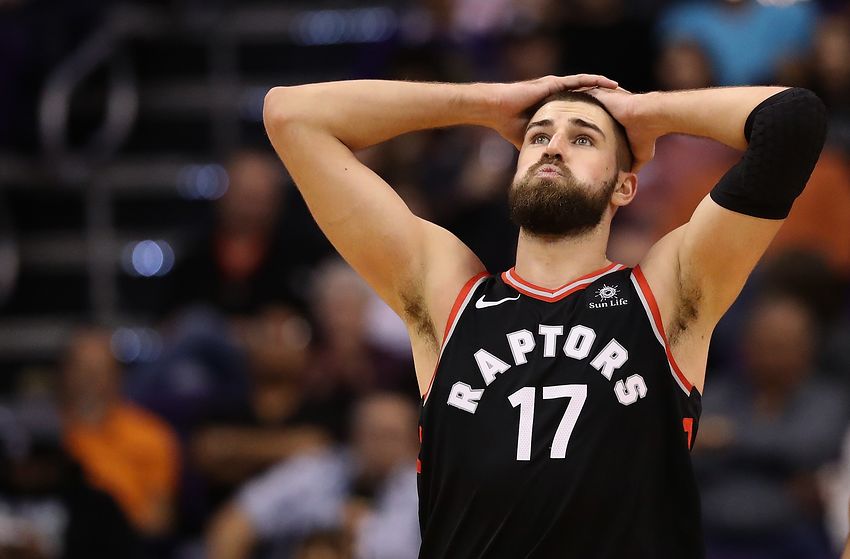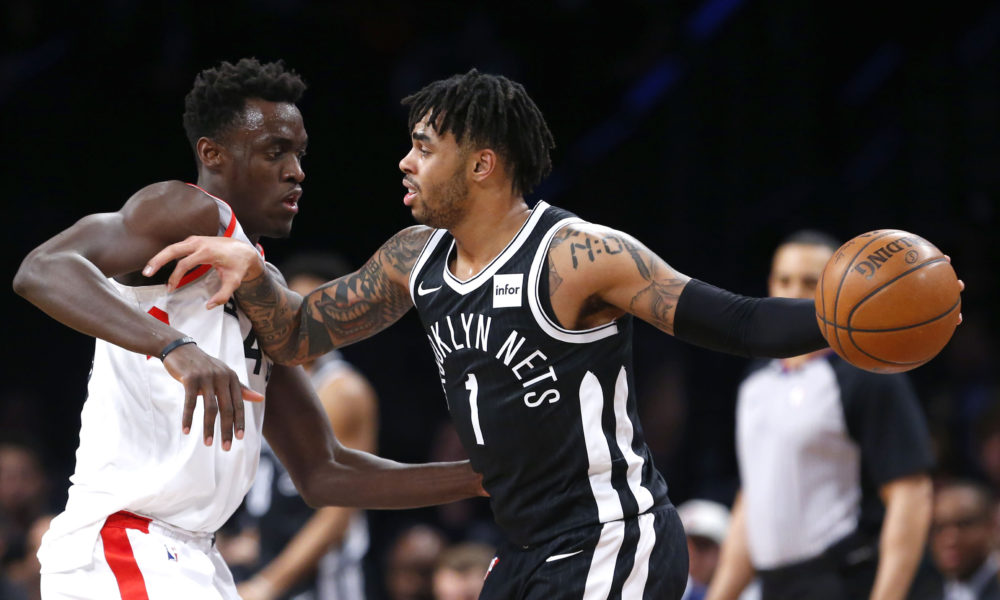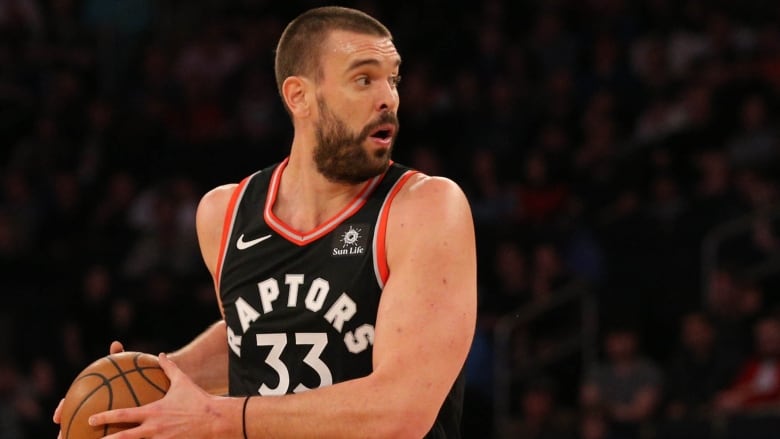There are few players in Toronto Raptors history who have had a stranger tenure with the franchise than Jonas Valanciunas, the highest drafted player by the franchise since the Andrea Bargnani pick in 2006. The franchise’s history with top-5 draft picks, Chris Bosh and Marcus Camby aside, isn’t exactly storied, and Valanciunas is probably the hardest to define within that group, and the most hotly debated among fans and media.
For a highly touted draft prospect such as Valanciunas, and one widely regarded as a solid pick, it’s also unusual for a young guy to see his minutes drop continuously after his second season in the league, despite maintaining his status as a mainstay in the franchise’s rotation, but that’s also part of Jonas’ story. In 2013-14, as a second year player, he averaged 28.2 minutes per game, a career high that he wouldn’t approach during the rest of his time with the Raptors. The player he would widely become known as, a plodding center who operated mostly within the post and was extremely limited defensively is how he has been commonly regarded throughout his career, but those first two seasons were really the only time that he was just that player. He just couldn’t escape those narratives, no matter what he added to his game.
As the seasons went on and Jonas’ usage increased while his minutes dropped, he added an improved midrange touch and eventually stretched that out to three-point range, a gimmick which eventually became a shot that fans would criticize him for not taking when the opportunity presented itself. He became a better positional defender, still limited by his speed, but better at finding the levels in between, where he could recover at the rim and contest shots without fouling. The truth about Jonas defensively is that when he wasn’t being asked to plug holes in a defense frequently opening up gaps for the opponent to attack, he became a reliable interior presence, and the numbers the last few seasons backed that up, with the Raptors defending much better at the rim with him on the court than off.
Over the last few seasons, as well, he helped stem the effects of age with Kyle Lowry, with the franchise’s point guard being a much more effective presence with his dependable big man out there setting screens for him and giving him a large target in the paint when he needed to look for the pass, and it showed in Lowry’s shooting percentages with Jonas on and off the floor. As well, DeMar DeRozan and Jonas learned, last season, to co-exist on the offensive end better, with DeRozan’s improvements in the passing game and Jonas’ developments reading the defense on the roll allowing them to develop a 2-man game that was hard to stop. His touches never consistently came though, as the team would frequently open halves with an emphasis on Jonas being involved in the offense only to see that disappear as the game went on. He’d get the lion’s share of his involvement in the first 4 or 5 minutes of each half frequently, and then find himself setting screens and otherwise watching the offense work while waiting to try for an opportunity on the offensive boards.
Still, the narratives persisted.
When the playoffs rolled around, and the Raptors ran into teams that played competent small-ball and posed shooting threats at every position, the Raptors consistently went away from Jonas, allowing opponents to dictate the terms of the game. They didn’t look to press the advantages that he presented in the paint, to force opponents to try to match up with him on the boards, and they accepted the terms that teams presented them with, despite Jonas’ own efficiency and effectiveness having shown to have improved value in the playoffs, and that helped lead to some early playoff exits. In 2015-16 he was having his breakout moment in the postseason when, after putting together a dominant series and helping the Raptors overcome the Indiana Pacers, he was off to a torrid start against the Miami Heat prior to spraining his ankle and being unavailable until the end of the Eastern Conference Finals as the Raptors went down to LeBron and the Cleveland Cavaliers. Again, last year, he delivered a huge first round for the team, only to see his minutes slashed against Cleveland, and him eventually replaced in the starting lineup for the final game of the sweep.
None of this is to say that Jonas didn’t have moments where the limitations were appropriate. He could still be exploited in the pick and roll, and when the team didn’t seem inclined to run secondary actions offensively, it was hard to keep him involved. These moments, however, tended to be exaggerated to make him look like a weakness on the team.
Yet, despite the constant reductions of his role on the team, and despite the team always looking for solutions that pulled the gameplan away from Valanciunas, he took it all in stride. Which is maybe part of why he built up such a loyal personal fanbase in Toronto. Even as this season went on, he saw himself go from being the part-time starter to only getting one start in the last 9 games before his injury as the team went to Serge Ibaka more and more with the starting lineup. Despite that, Valanciunas just kept bringing dependable effort and production for the team.
Maybe, in retrospect, it’s appropriate then that after years of rumors and speculation that he’d be traded, as the team consistently seemed to not have Jonas in their long-term plans, constantly looking for other answers at center, he finally got traded after a period of two months where he wasn’t available. The last two months, the Raptors have struggled often, delivering either underwhelming wins or concerning losses with regularity, and while there has been a lot of discussion as to why, a big part of it has been the Jonas-shaped hole in the rotation. They didn’t have a roll man for Lowry or Kawhi Leonard, each of whom often looks to the pick and roll to generate their offense, and Greg Monroe, try as he might, couldn’t fill in there. The bench struggled to find any shot creation without Jonas, and the Raptors’ rankings in paint defense plummeted while the big man was out.
It’s entirely possible, as well, that Marc Gasol will fill that void admirably. He’s more than capable of being a defensive presence in the paint, as his resume can attest, and he’s got great touch and awareness offensively. Gasol is one of the best passing big men in the history of the league, and that is something the Raptors will surely look to use to add to their offense. If Gasol succeeds however, there will be a push to make the narrative that Gasol was an upgrade over Valanciunas, and there will be resistance to that. The truth is, most of Jonas’ Raptors career seemed to exist in the unknown, the questions of whether the team could’ve been better with more focus on him and better game-planning for his skillset, and his exit will be the same. The Raptors didn’t go from Jonas Valanciunas to Marc Gasol, they went from the glaring absence of Jonas Valanciunas to Marc Gasol.
Despite all of this, I’ll remember Jonas time with the Raptors for the brief periods of incredible dominance, the ease with which he seemed to put up 20-10 games and the way he embraced the matchups against bigger centers and guys with established names in the league. I’ll remember it for his primal screams after big plays, and the way he wore his heart on his sleeve. I’ll remember the fun post-game interviews and the banter, the way the guys around him clearly loved playing with him. JV, despite all the reasons that his term as a Raptor was complicated, will always be one of my favorite players to wear the jersey, because he was always so easy to root for.
Perhaps it was never meant to be for Jonas and the Raptors though. The organization never seemed completely sold on him as a long-term solution, and he continually seemed to be trying to adapt his game to try to fill the role they looked for in a center. It’ll be easy to cheer for Jonas in Memphis though, to hope that he finds the fresh start that his career might need to finally take off, and for him to get the minutes and touches to find out if he can expand his game and really breakout, something he’s seemed to be on the verge of in Toronto for the past few seasons and never quite been able to make happen. That’s part of why this trade was difficult and emotional, because it was so easy to get invested in the idea that Jonas would eventually take that next step, and the longer he stayed in Toronto, the more I hoped that would happen as a Raptor.



